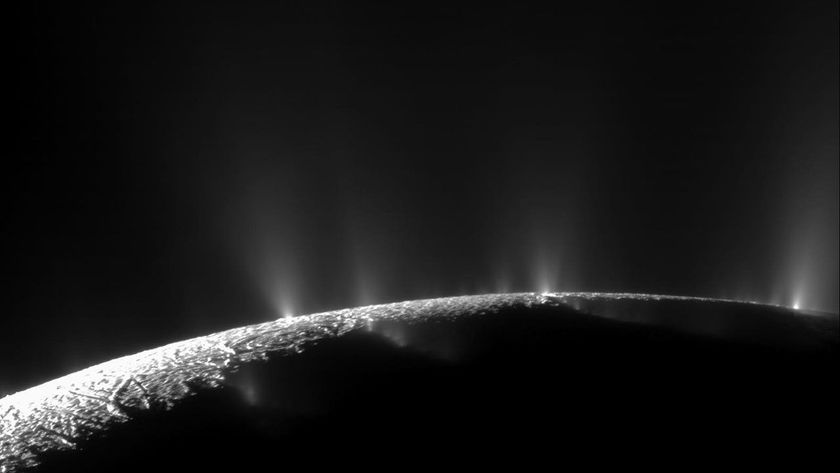Saturn's Moon May Provide New Life to Conquer
While world domination remains – as always – that golden dream of every mad scientist worth her weight in sulfuric acid, it's a very frustrating exercise. At some point we all have to admit it: The people of Earth just don't want to have a megalomaniacal researcher telling them what to do, how to think, and who to worship as their all-knowing dictator.
Which is why I'm thinking about branching out – to new planets, new species. And if some titillating research on Titan, a moon of Saturn, implies what I think it implies, I might soon have a new moon to focus on conquering.
Titan has long drawn attention to itself as a unique moon – the only one with a dense atmosphere, and the only other body in the solar system with stable liquids. But now, researchers at the University of Arizona are showing that the atmosphere of Titan could be a potential breeding ground for life – life that will soon be mine to rule!
Of course, all this is quite theoretical. The research team, led by Sarah Hörst, attempted to recreate the conditions of Titan’s atmosphere in their lab, and found its conditions to be capable of creating the types of complex molecules necessary for the formation of life.
They based their model off of samples of Titan's atmosphere gathered and analyzed by the spacecraft Cassini. The samples were taken from the outermost reaches of its atmosphere – an atmosphere that stretches relatively farther into space than the Earth's, because of its low gravity.
Cassini was able to analyze some of the smaller molecules in Titan's atmosphere with its on-board mass spectrometer, but couldn't identify the larger, more complicated molecules. So in order to figure out what it's like to be a molecule on Titan, Hörst's team took a molecular mixture that mimicked the composition of Titan's atmosphere, subjected it to microwave radiation, and examined the resulting chemical mixture.
What they found included amino acids, the building blocks of proteins, and nucleotides, the building blocks of DNA. This suggests that the outer reaches of Titan's atmosphere, exposed to ultraviolet radiation and charged particles from the sun, might similarly contain these types of molecules.
Sign up for the Live Science daily newsletter now
Get the world’s most fascinating discoveries delivered straight to your inbox.
This is a technique that scientists have used before, in other attempts to create new life from scratch. But in all these other experiments, the precursors to life have been made from a primordial soup, not from a cloud of primordial smog. This is the first time these molecules have been produced in the absence of water.
This certainly has implications for the weather on Titan, and brings up exciting questions about the origins of life on Earth: Could our molecular ancestors have been formed in the atmosphere and rained into the sea, instead of coming together in that primordial murk?
But more exciting, for the power-mad scientist, is the fact that Titan might be home to a whole new world of life, just waiting for some cruel scientist-king to come along and rule it. And since I've got a few billion years of evolution on these critters, I don't have to worry about them rebelling against me.
Of course, life hasn't been detected on Titan yet – and there's no guarantee that it'll show up anytime soon. But if I head over there with a lab coat and my very best maniacal laugh, I'll be in a good position to take over that life once it emerges.
It'll be so much easier than trying to take over these pesky human beings! They never stop complaining – about being subjugated, repressed – yeesh! I'm sure my microbial alien subjects will be far more amenable to my malevolent rule.
More Mad Scientist:
- Taking Over the World With My Bear Hands
- Genetic Science Oozes Out of Amateurs' Garages
- How Teens Could Overrun the Earth
Mad scientist Eric Schaffer has one index finger on the "fire death ray!" button and his other index finger on the exciting pulse of scientific research. His accounts of diabolical machinations, as well as research breakthroughs, appear regularly on LiveScience.












